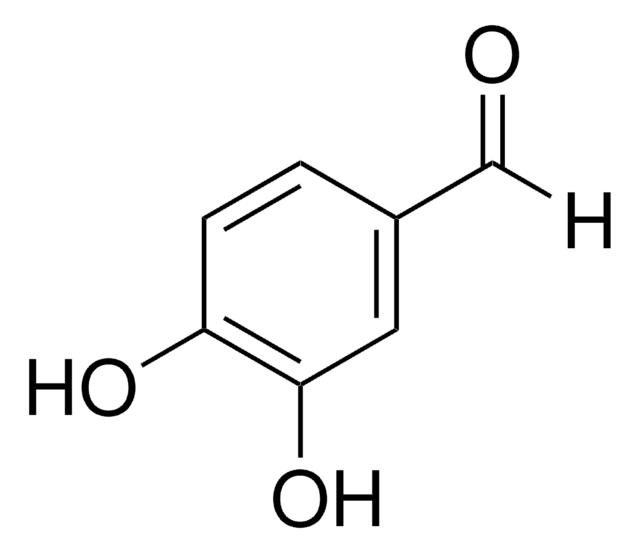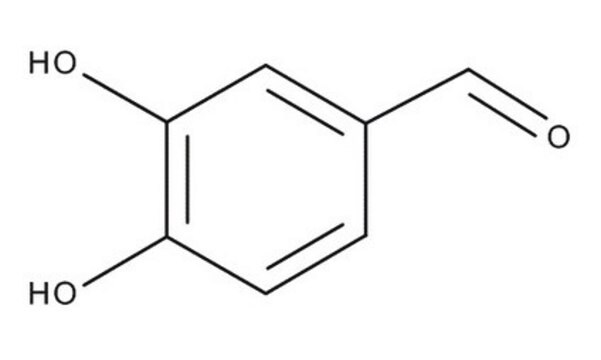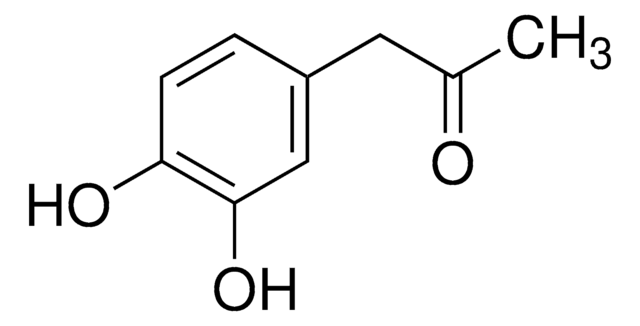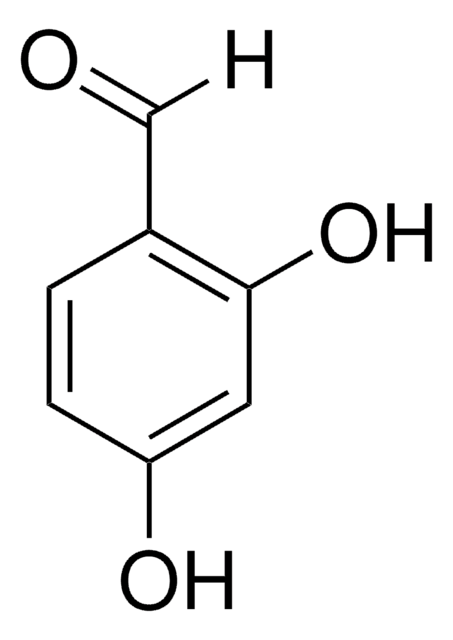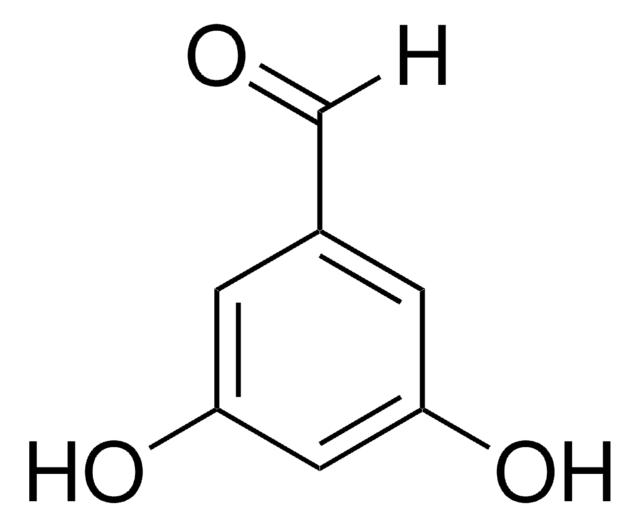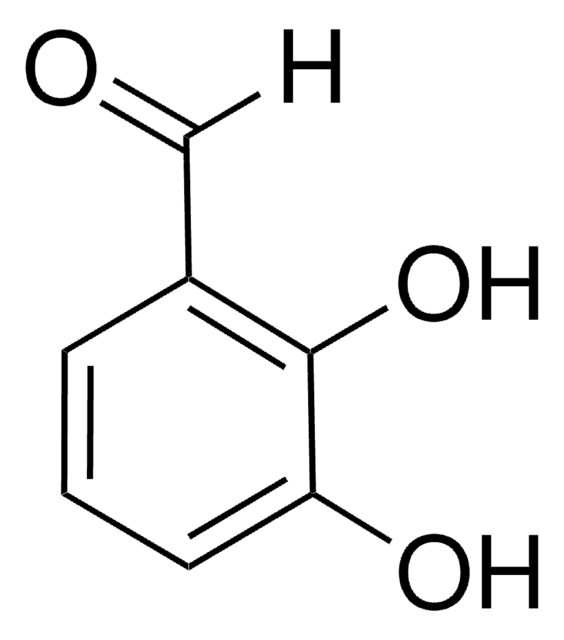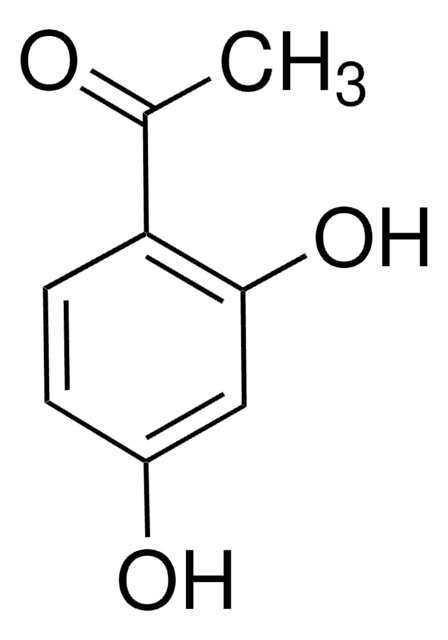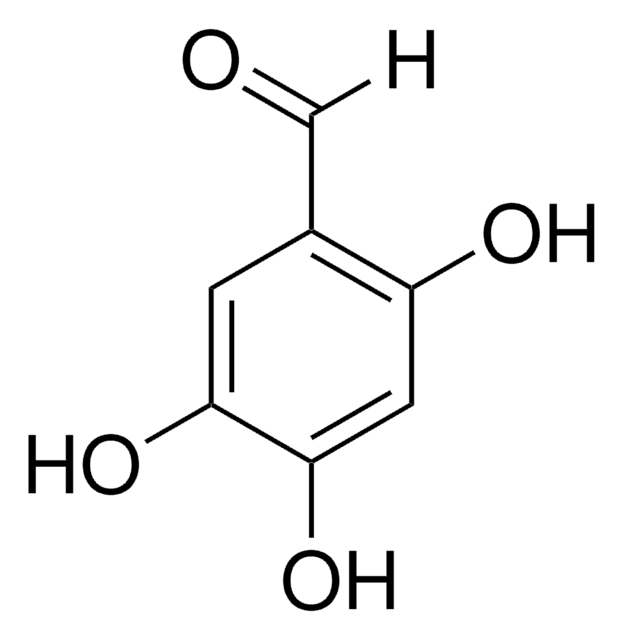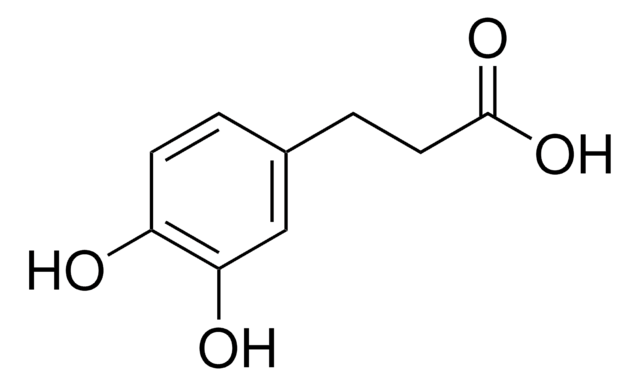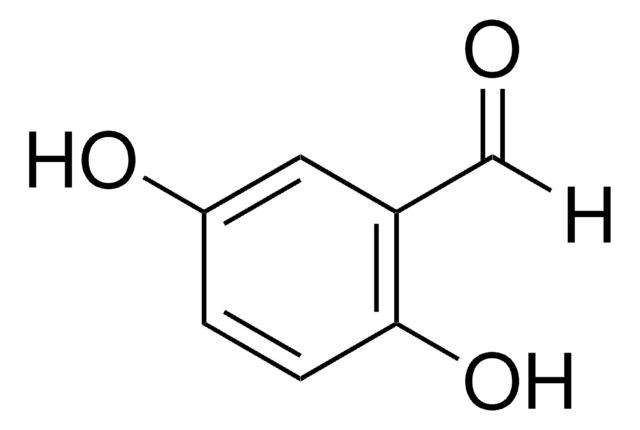37520
3,4-Dihydroxybenzaldehyde
purum, ≥97.0% (HPLC)
Sinônimo(s):
Protocatechualdehyde
Faça loginpara ver os preços organizacionais e de contrato
About This Item
Fórmula linear:
(HO)2C6H3CHO
Número CAS:
Peso molecular:
138.12
Beilstein:
774381
Número CE:
Número MDL:
Código UNSPSC:
12352100
ID de substância PubChem:
NACRES:
NA.22
Produtos recomendados
grau
purum
Nível de qualidade
Ensaio
≥97.0% (HPLC)
Formulário
powder
pf
150-155 °C
150-157 °C (lit.)
grupo funcional
aldehyde
cadeia de caracteres SMILES
Oc1ccc(C=O)cc1O
InChI
1S/C7H6O3/c8-4-5-1-2-6(9)7(10)3-5/h1-4,9-10H
chave InChI
IBGBGRVKPALMCQ-UHFFFAOYSA-N
Procurando produtos similares? Visita Guia de comparação de produtos
Categorias relacionadas
Descrição geral
3,4-Dihydroxybenzaldehyde has been recognized as one of the antifungal compound extracted from the outer skin of green Cavendish bananas. It can be synthesized from catechol via Fries rearrangement.
3,4-Dihydroxybenzaldehyde is reported as bioactive compound which inhibits the H2O2-induced apoptosis of granulosa cells. Oxidation of 3,4-dihydroxybenzaldehyde on glassy carbon electrodes is reported to afford stable redox-active electropolymerized films containing a quinone moity.
Aplicação
3,4-Dihydroxybenzaldehyde (Protocatechualdehyde) may be employed as starting reagent for the synthesis of 4-vinylbenzocrown ether.
3,4-Dihydroxybenzaldehyde may be used for the surface modification of nanocrystalline TiO2 particles. Electrodeposited layer of 3,4-dihydroxybenzaldehyde may be used as effective redox mediator during oxidation of NADH at graphene. It may be used in the preparation of new diSchiff base ligands, which forms di-, tri- and tetranuclear Co(II) and Cu(II) complexes.
Palavra indicadora
Warning
Frases de perigo
Declarações de precaução
Classificações de perigo
Eye Irrit. 2 - Skin Irrit. 2 - STOT SE 3
Órgãos-alvo
Respiratory system
Código de classe de armazenamento
11 - Combustible Solids
Classe de risco de água (WGK)
WGK 3
Ponto de fulgor (°F)
Not applicable
Ponto de fulgor (°C)
Not applicable
Equipamento de proteção individual
dust mask type N95 (US), Eyeshields, Gloves
Escolha uma das versões mais recentes:
Já possui este produto?
Encontre a documentação dos produtos que você adquiriu recentemente na biblioteca de documentos.
Os clientes também visualizaram
3, 4-dihydroxybenzaldehyde, a fungistatic substance from green Cavendish bananas.
Mulvena D, et al.
Phytochemistry, 8(2), 393-395 (1969)
Nicole L Ritzert et al.
Faraday discussions, 172, 27-45 (2014-11-27)
Over the past decade, there has been a great deal of interest in graphene with regards to its electrochemical behavior. Previous studies have focused on understanding fundamental processes such as charge transfer and molecular transport at the graphene-electrolyte interface as
Tatjana D Savić et al.
Physical chemistry chemical physics : PCCP, 16(38), 20796-20805 (2014-08-29)
The surface modification of nanocrystalline TiO2 particles (45 Å) with catecholate-type ligands having different electron donating/electron withdrawing substituent groups, specifically 3-methylcatechol, 4-methylcatechol, 3-methoxycatechol, 3,4-dihydroxybenzaldehyde and 4-nitrocatechol, was found to alter the optical properties of nanoparticles in a similar way to
Ahlam Jameel Abdulghani et al.
Bioinorganic chemistry and applications, 2013, 219356-219356 (2014-01-24)
A series of new di-, tri-, and tetranuclear Co(II) and Cu(II) complexes of three new diSchiff base ligands were synthesized by two different methods. The first method involved the synthesis of the three ligands from condensation reaction of 3,4-dihydroxybenzaldehyde (L'H2)
Ting Xie et al.
PeerJ, 7, e7690-e7690 (2019-10-03)
Lecanicillium lecanii is an entomopathogenic fungi, which was isolated from insects suffering from disease. Now, it is an effective bio-control resource that can control agricultural pests such as whitefly and aphids. There are many studies on the control of various
Nossa equipe de cientistas tem experiência em todas as áreas de pesquisa, incluindo Life Sciences, ciência de materiais, síntese química, cromatografia, química analítica e muitas outras.
Entre em contato com a assistência técnica